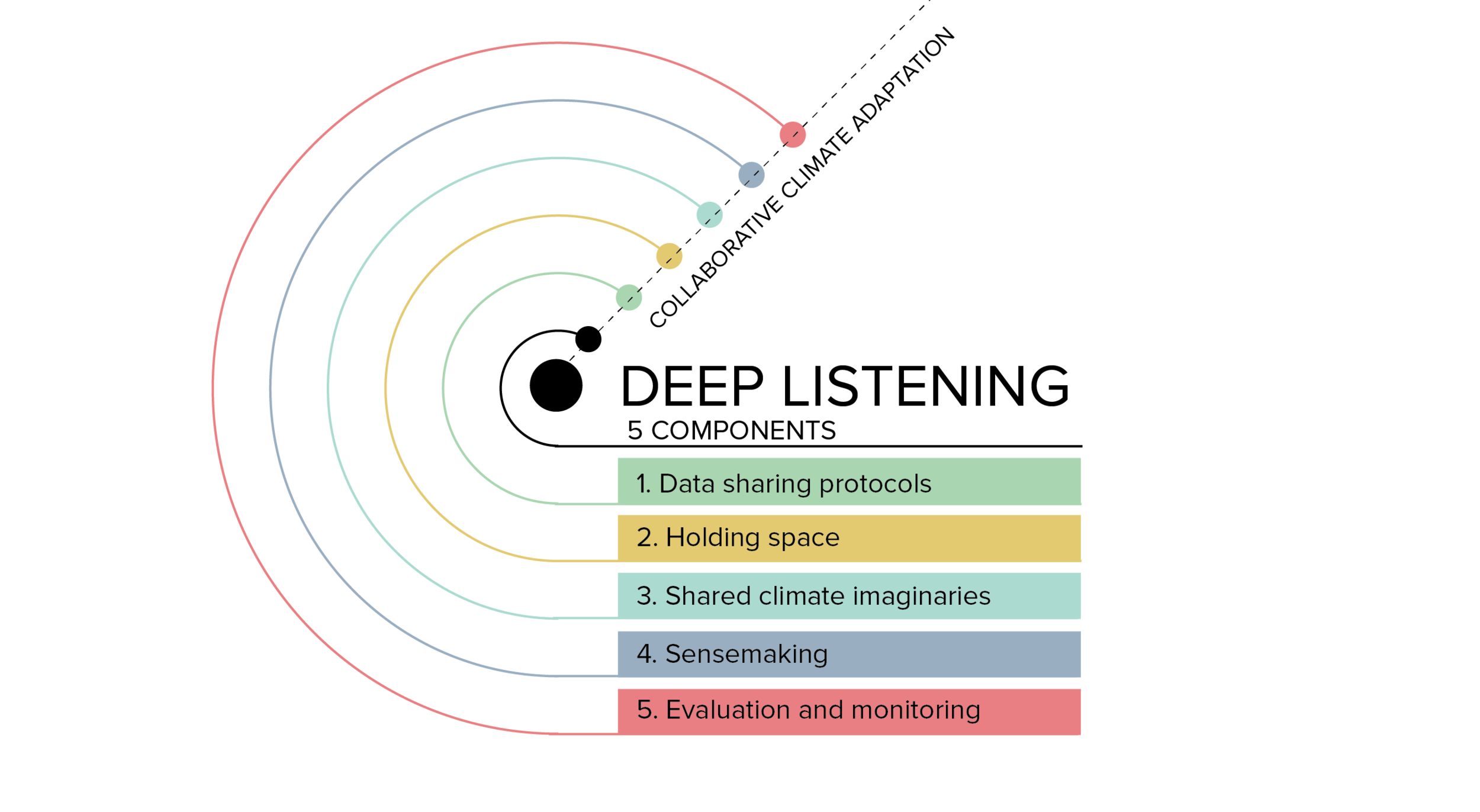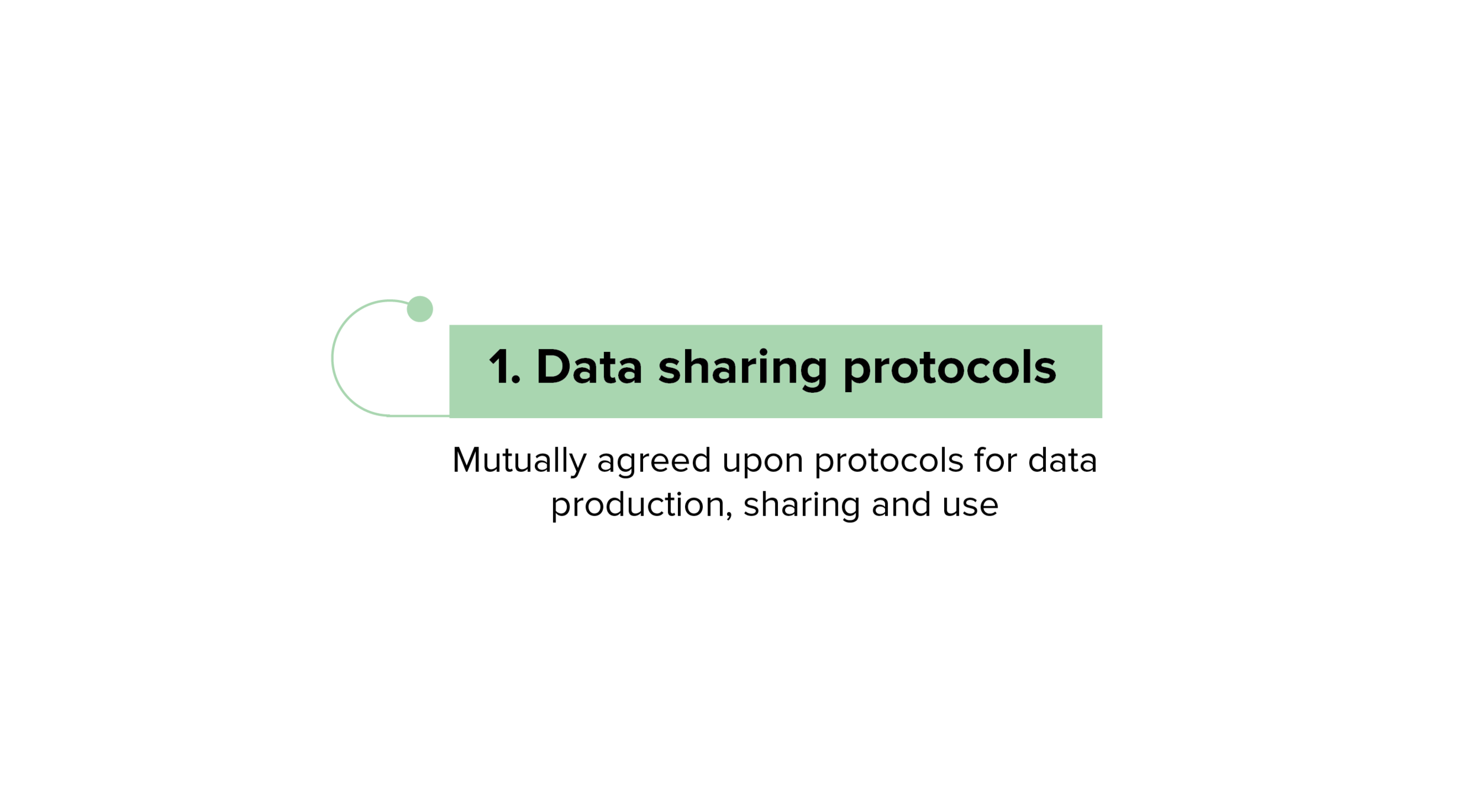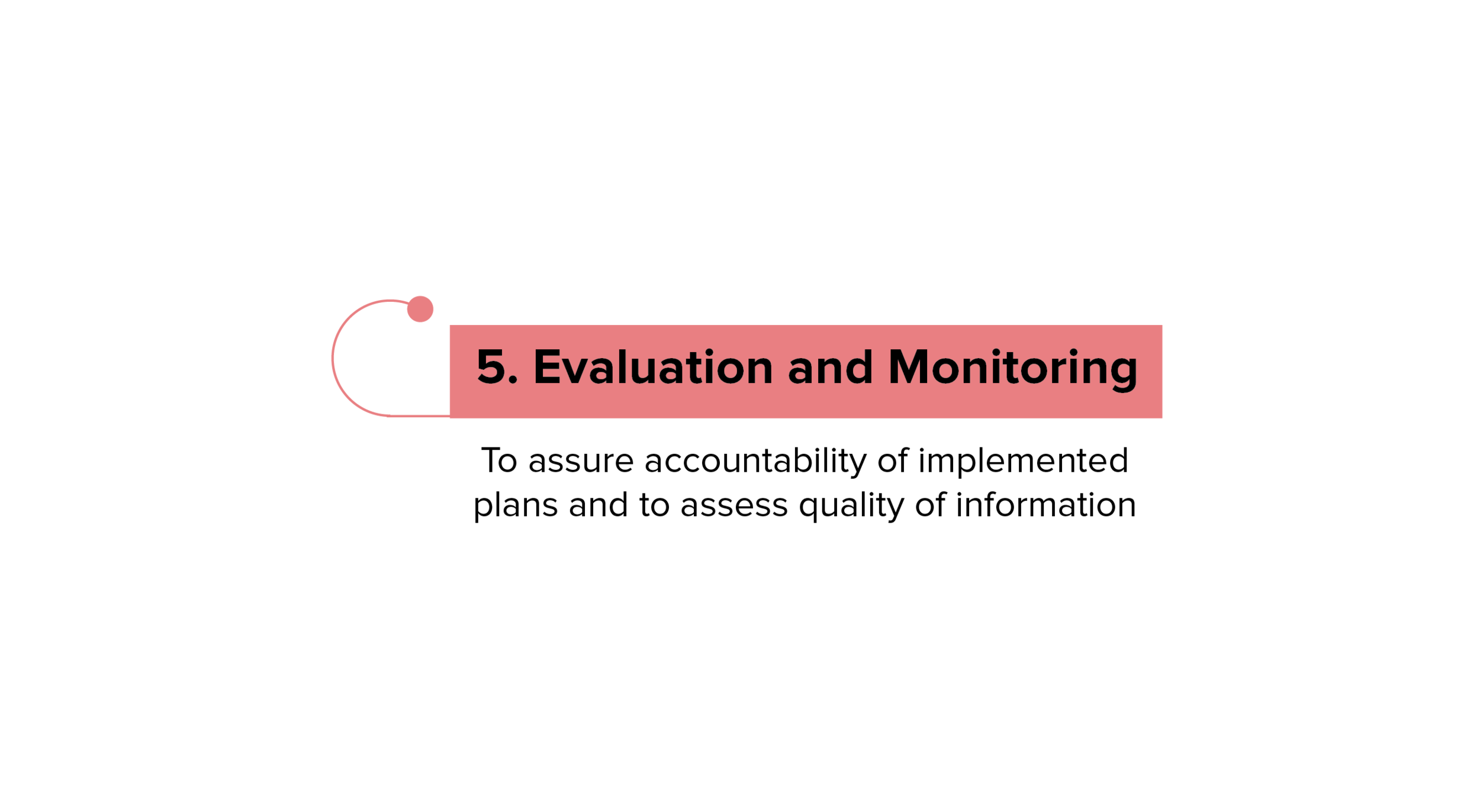
What is deep listening?
A form of institutional and community intake that considers diversity, tensions and frictions, and that incorporates communities’ values in creating solutions.
The five components of deep listening
1. Knowledge Sharing
Creating the baseline rules and technical infrastructure for data and information sharing between institutions and frontline communities.
2. Holding Space
Designing digital and physical spaces for open and safe dialog among stakeholders.
3. Co-production and sharing of climate imaginaries.
Creating tools and platforms for local storytelling that are informed by climate science and legible to decision-makers.
4. Sensemaking with a diversity of perspectives and scientific data.
Developing easy to use, AI-informed tools for institutions to make sense of a variety of inputs from frontline communities.
5. Evaluation and monitoring support to assure accountability and to assess quality of information.
Creating tracking technologies and protocols that hold institutions and communities accountable to adaptation plans.
Deep Listening gives Indigenous and frontline communities opportunities and resources to effectively gather and translate stories into language that institutions understand. This is the only way to transform practice and policy decisions so that decisions are optimized for those most impacted by climate change.
We need to imagine new climate futures
What are climate imaginaries? According to Jenkins et. al. "One cannot change the world without imagining what a better world might look like.”.¹ Imagination implies a freedom to create, but that freedom is not equally distributed. When imaginaries intersect with politics, power determines what imaginaries matter.Indigenous Peoples and frontline communities are already imagining through a variety of media, including video documentaries, radio, TikToks, and oral storytelling. However, these efforts are too often disconnected from formal adaptation planning.






